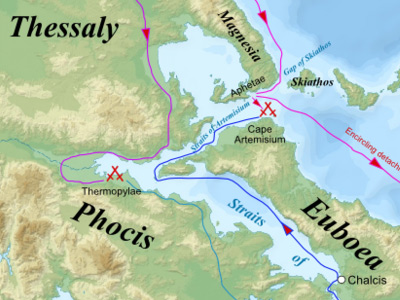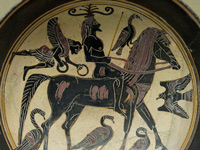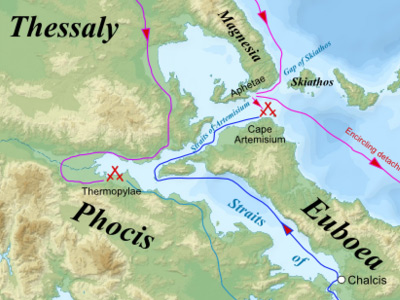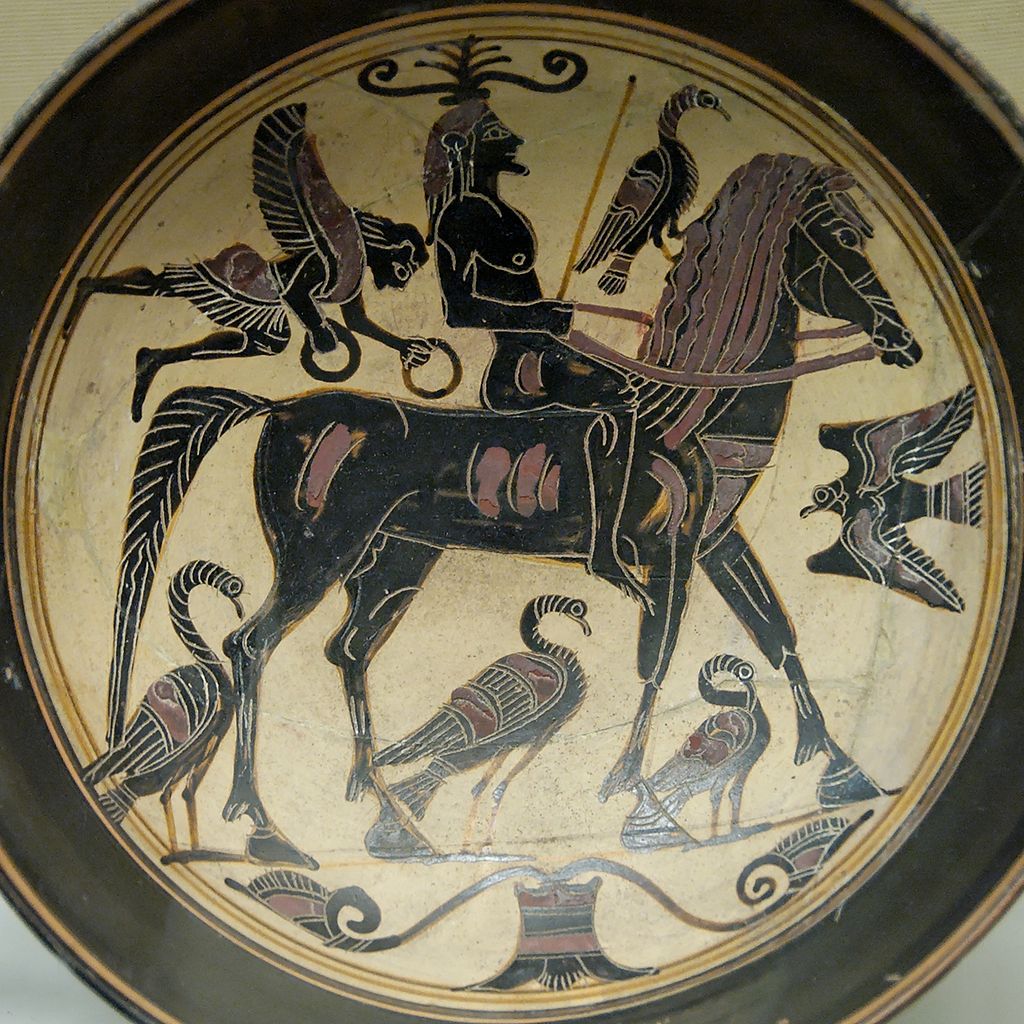Battle of Thermopylae (480 BC)

First Day
On the fifth day after the Persian arrival at Thermopylae and the first day of the battle, Xerxes finally resolved to attack the Greeks. First, he ordered 5,000 archers to fire a barrage of arrows, but they were ineffective; they fired from at least 100 yards away, according to modern day scholars, and the Greeks' bronze shields and helmets deflected the missiles. After that, Xerxes sent a force of 10,000 Medes and Cissians to take the defenders prisoner and bring them before him. The Persians soon launched a frontal assault, in waves of around 10,000 men, on the Greek position. The Greeks fought in front of the Phocian wall, at the narrowest part of the pass, which enabled them to use as few soldiers as possible.
Details of the tactics are scant; Diodorus says, "the men stood shoulder to shoulder", and the Greeks were "superior in valor and in the great size of their shields." This probably describes the standard Greek phalanx, in which the men formed a wall of overlapping shields and layered spear points protruding out from the sides of the shields, which would have been highly effective as long as it spanned the width of the pass. The weaker shields, and shorter spears and swords of the Persians prevented them from effectively engaging the Greek hoplites. Herodotus says that the units for each city were kept together; units were rotated in and out of the battle to prevent fatigue, which implies the Greeks had more men than necessary to block the pass. The Greeks killed so many Medes that Xerxes is said to have stood up three times from the seat from which he was watching the battle. According to Ctesias, the first wave was "cut to ribbons", with only two or three Spartans killed in return.
According to Herodotus and Diodorus, the king, having taken the measure of the enemy, threw his best troops into a second assault the same day, the Immortals, an elite corps of 10,000 men. However, the Immortals fared no better than the Medes, and failed to make any headway against the Greeks. The Spartans apparently used a tactic of feigning retreat, and then turning and killing the enemy troops when they ran after them.
HISTORY

RESOURCES
This article uses material from the Wikipedia article "Battle of Thermopylae", which is released under the Creative Commons Attribution-Share-Alike License 3.0.
© Stories Preschool. All Rights Reserved.










